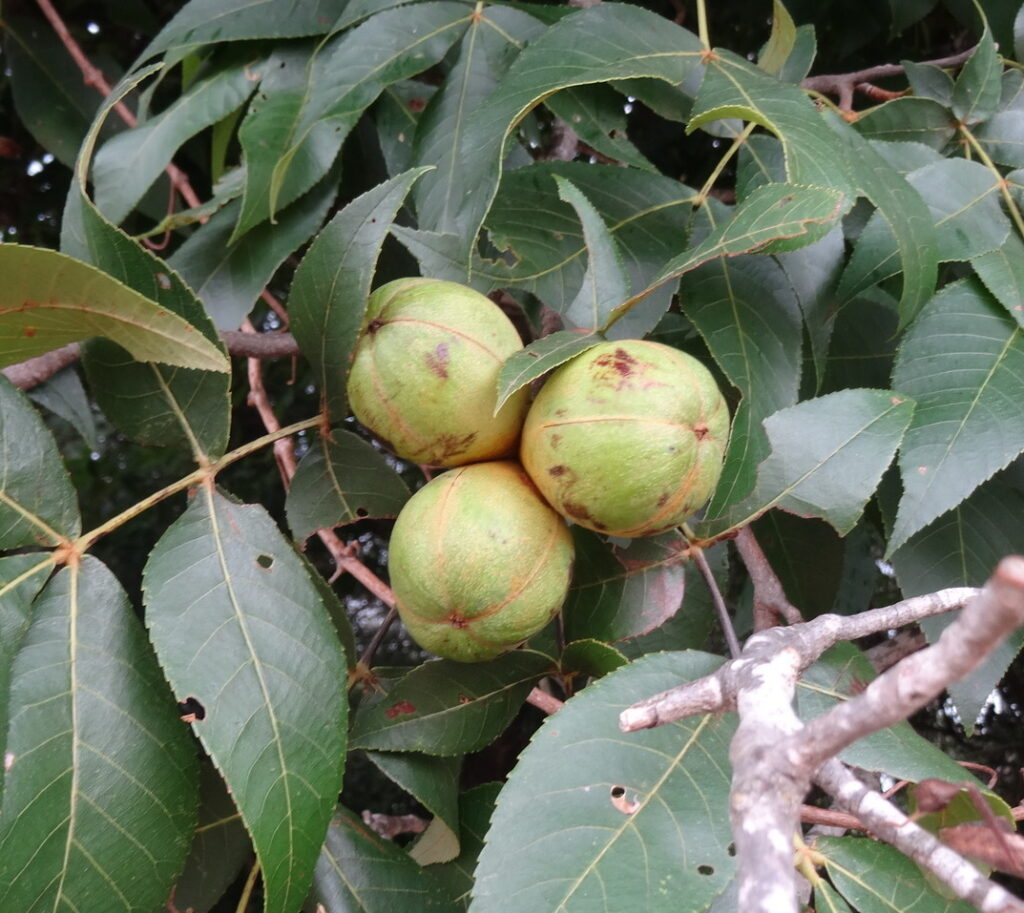Roughly one dozen species belong to the deciduous hickory (genus Carya -family
Juglandaceae. The hickory tree produces a dense, strong, and shock-resistant wood that is commonly
used to make tool handles, furniture, and decorative architectural elements. In addition, many types of
hickory are sought for use in the content and preparation of food, and can be useful in survival
situations. Hickory trees have bark that forms ridges in a vertical pattern. These ridges may be shallow
or deep, far apart or close together, but always vertical. Additionally, some hickory bark becomes
raised at the plate edges as the tree matures, and eventually flakes off, from top to bottom. A hickory
tree’s leaves are always directly opposite one another and with one on the end making groups of odd
numbers with the largest of the leaves at the very tip of the branch.






